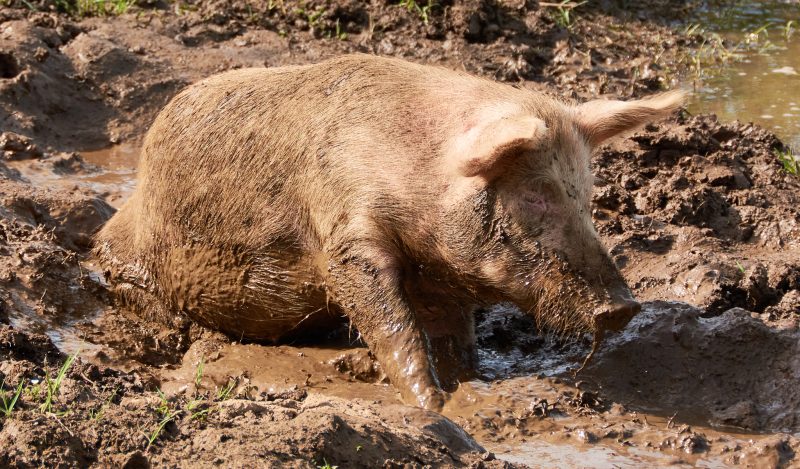In his 1905 classic The Jungle, Upton Sinclair fictionally recounts the process by which sausage is made at a meatpacking plant in turn-of-the-century Chicago.
There would be meat stored in great piles in rooms; and the water from leaky roofs would drip over it, and thousands of rats would race about on it. It was too dark in these storage places to see well, but a man could run his hand over these piles of meat and sweep off handfuls of the dried dung of rats. These rats were nuisances, and the packers would put poisoned bread out for them; they would die, and then rats, bread, and meat would go into the hoppers together.
Fast forward to 2022, and instead of rusty nails, poisoned bread and rat dung, we have the work of Imperial College, the Lancet and Eric Feigl-Ding.
The process by which these delectable ingredients are transformed into Covid “science” for public consumption was illustrated most recently by the widespread dissemination of two atrocious scientific preprints. The first was a preprint in the Lancet pretending to show that Covid vaccines saved over 20 million lives, and the second a preprint falsely claiming that Covid was one of the leading causes of death in children.
First, the Lancet: The once-esteemed journal now famous for such Lysenkoist gems as “China’s Successful Control of Covid-19” and “Shanghai’s life-saving efforts against the current omicron wave of the COVID-19 pandemic.” Last week, the Lancet published a new preprint on a “mathematical modelling study” by Imperial College—funded by GAVI, the Bill and Melinda Gates Foundation and the World Health Organization—claiming to show that Covid vaccines saved 20 million lives.
Never mind that the study was only a preprint. Never mind that it was based on mathematical models which were little more than opinions. Never mind that the models somehow ignored natural immunity, deaths prior to the vaccine rollout, Covid’s highly-stratified risk by age, and the reduction in Covid’s severity over time. Within three days, the study’s farcical conclusion had been scooped up and dumped across the front pages of the world’s most influential media outlets.
Second, another recent preprint claimed to show that Covid was one of the five leading causes of death in children. But this claim was based on two egregious and obvious errors. Whereas the study counted the total number of Covid deaths in children on a cumulative basis since early 2020, this total number was compared to numbers of deaths from other causes during only one year.
And whereas any death in which the child died “with Covid” was counted as a Covid death, the other causes were counted only if they were the underlying cause of death. Yet these glaring errors did not stop three differentUS CDC officials and countless other public health professionals from citing the false claim.
This is how the sausage gets made.
This is no fairy story and no joke; the meat would be shoveled into carts, and the man who did the shoveling would not trouble to lift out a rat even when he saw one—there were things that went into the sausage in comparison with which a poisoned rat was a tidbit.
This process is, of course, nothing new as far as the response to Covid. From the very beginning, virtually every Covid policy has come about as a result of elite institutions and regulatory bodies throwing their reputation behind studies of questionable origin and scientific merit, for reasons that remain largely a mystery.
Policymakers justified the strict lockdowns of 2020—which ultimately led to the deaths of tens of thousands of young Americans and pushed over 75 million people globally into extreme poverty—with little more than the infamous Imperial College model wrongly predicting millions of Covid deaths, Italy’s curious adoption of China’s lockdowns for no real reason at all, the WHO’s rubber stamping of China’s logically-impossible Covid narrative, and a bewilderingly viral blog post by thinkfluencer Tomas Pueyo.
To this day, the CDC continues to justify mask mandates that have violated the fundamental autonomy of millions of Americans based on one study claiming that two hairdressers wearing cloth masks did not spread Covid to their clients. And virtually every official in charge of the response to Covid repeated the absurd claim that Covid vaccines prevent infection and transmission, a claim that we now know was based on little more than “hope.”
Perhaps no phenomenon better illustrates the preeminence of pseudoscience in Covid policy than the spectacular rise of Twitter celebrities like Eric Feigl-Ding. Much has been written about Ding’s legendary disreputability and lack of qualifications. While preaching incessantly about Covid’s danger to children on Twitter, Ding avoided school closures by moving his own children to Austria. It’s hard to think of any person—aside from, you know, the dictator of China—who you’d want further away from pandemic policy.
Some may be puzzled by this. Does Eric Feigl-Ding matter? Who listens to him? But in fact, Ding’s original viral Twitter thread was one of the most important forces behind early Covid alarmism in January 2020, and he’s been cited as a leading Covid expert many times by both the New York Times and CNN. Unlike renowned Harvard epidemiologist Martin Kulldorff and Stanford Professor Jay Bhattacharya, Ding has been given a verified Twitter account and is listed by Twitter as a “Covid-19 expert.” The sad truth is that few people in the world have had more influence on the response to Covid-19 than Eric Feigl-Ding.
In several articles and my book, I’ve gone to great lengths to try to explain the psychological resistance that the vast majority of the public seem to feel to momentarily looking behind the curtain of government propaganda and mainstream headlines about Covid. If they did, they would soon see the pseudoscientific rubbish that actually goes into the mandates which have been so catastrophic for the free world over the past two years.
The truth is that most people don’t particularly want to know what’s gone into these policies that they supported at least at some point, and for which they feel a little bit responsible. In some sense, the CDC and media outlets are simply telling the public what they want to hear, in turn perpetuating the same policies. The result is that this is Ding’s world; we’re just living in it.
Every spring they did it; and in the barrels would be dirt and rust and old nails and stale water—and cartload after cartload of it would be taken up and dumped into the hoppers with fresh meat, and sent out to the public’s breakfast.
Republished from the author’s Substack.
Join the conversation:


Published under a Creative Commons Attribution 4.0 International License
For reprints, please set the canonical link back to the original Brownstone Institute Article and Author.









